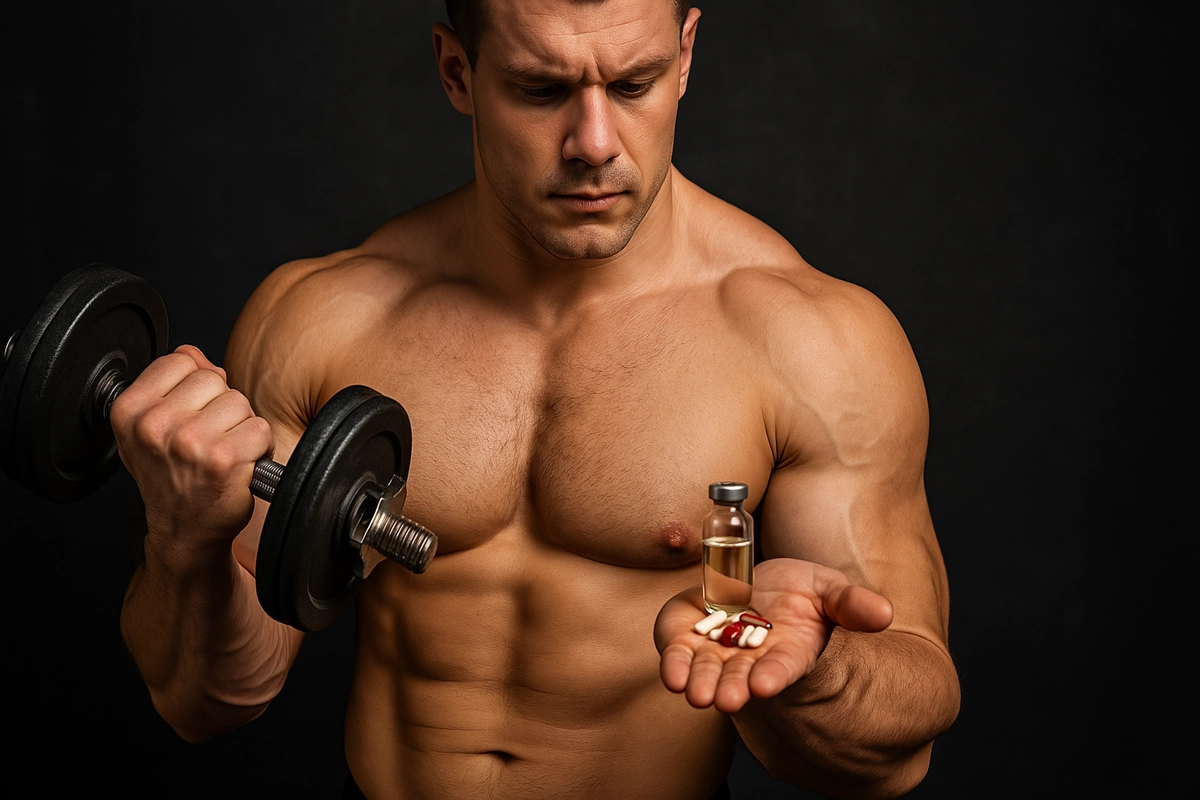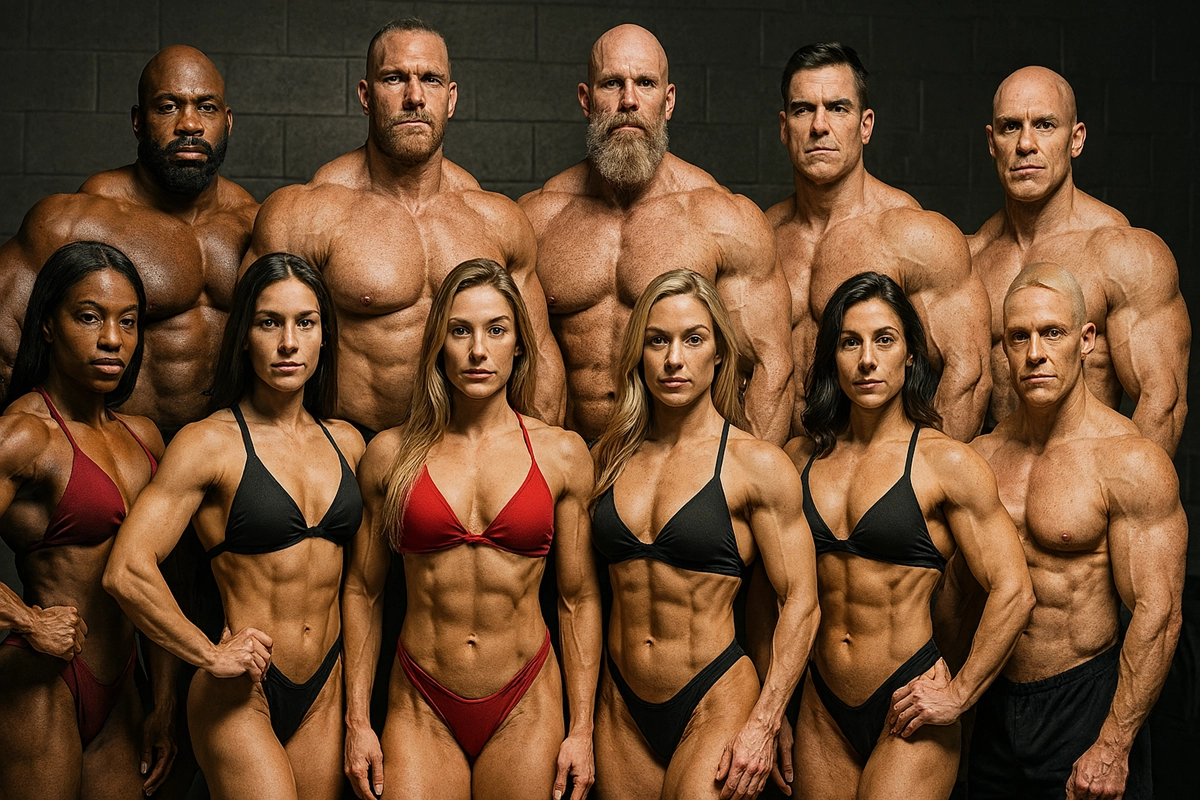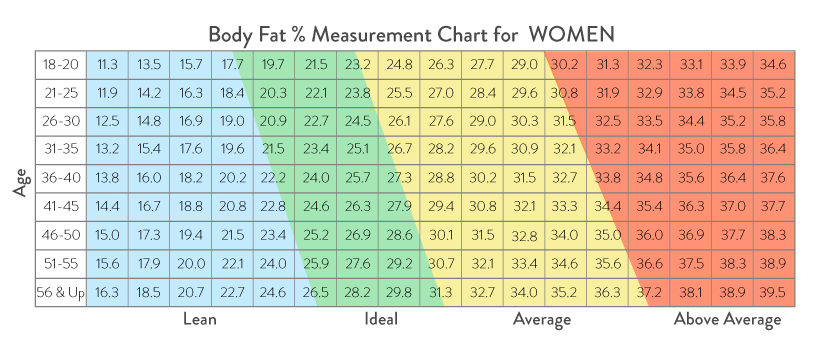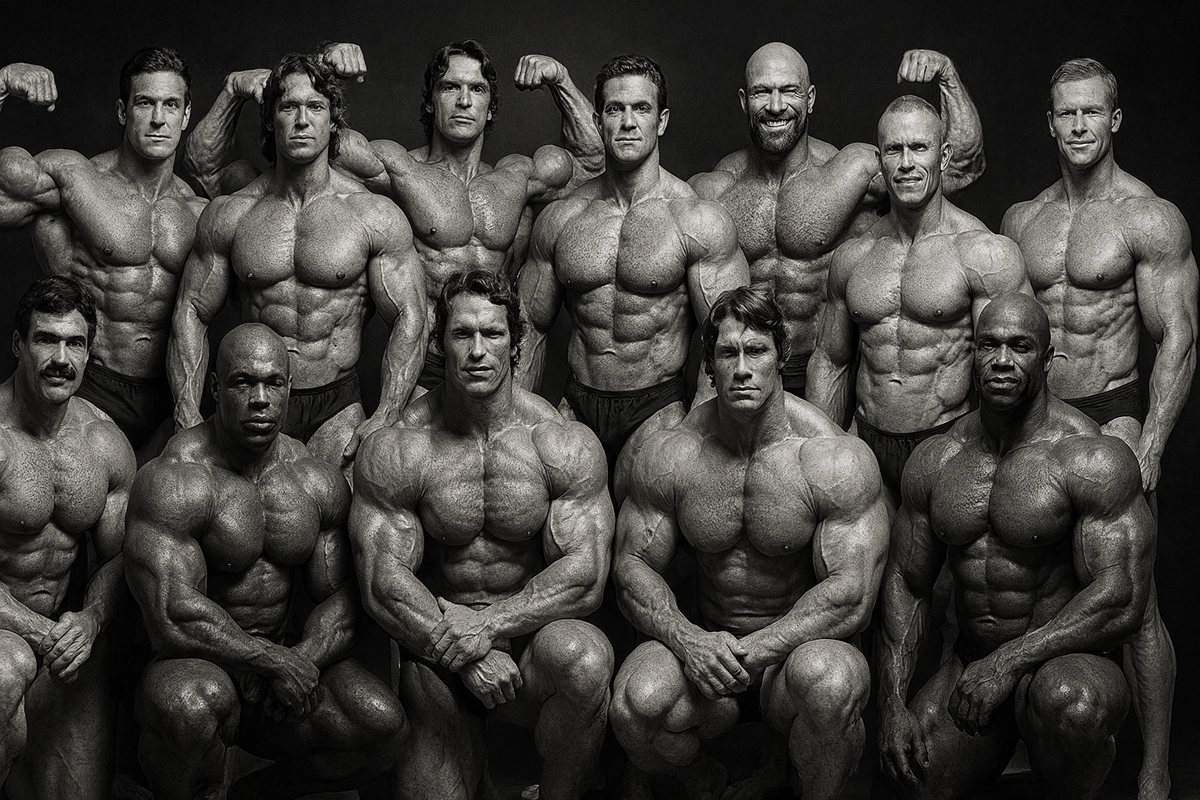You’ve likely wondered about steroid testing in bodybuilding, especially given the sport’s explosive growth and ongoing controversies. From Arnold Schwarzenegger’s golden era to today’s mass monsters, anabolic steroids remain a complex topic shrouded in myths and misconceptions.
While some federations maintain strict testing protocols, others operate with different standards – creating a landscape where understanding the truth about performance enhancement becomes essential for athletes and enthusiasts alike.
What Are Anabolic Steroids?
Anabolic steroids represent a class of synthetic hormones that mirror the effects of testosterone in your body. These performance-enhancing drugs were first created in the 1930s to help men with testosterone deficiency, but they’ve since become widely known in the bodybuilding world.
When you hear about testosterone derivatives, you’re dealing with compounds that affect your body in two main ways:
- Anabolic effects: Building muscle mass and increasing bone density
- Androgenic effects: Developing male characteristics like facial hair and a deeper voice
You’ll find that these synthetic substances closely resemble your body’s natural testosterone, but they’re specifically engineered to maximize muscle-building properties.
While Arnold Schwarzenegger’s era openly embraced these compounds, today’s bodybuilding landscape faces stricter scrutiny and regulation regarding their use.
How Anabolic Steroids Work in the Body
The remarkable process of building muscle through steroids starts at the molecular level, where these synthetic compounds interact with your body’s cellular machinery.
When anabolic steroids enter your system, they bind to special receptors in your muscle cells, triggering increased protein production and nitrogen retention.
Think of it like Arnold’s famous “pump” – but at a microscopic scale. These compounds accelerate muscle growth by enhancing your body’s natural muscle-building processes.
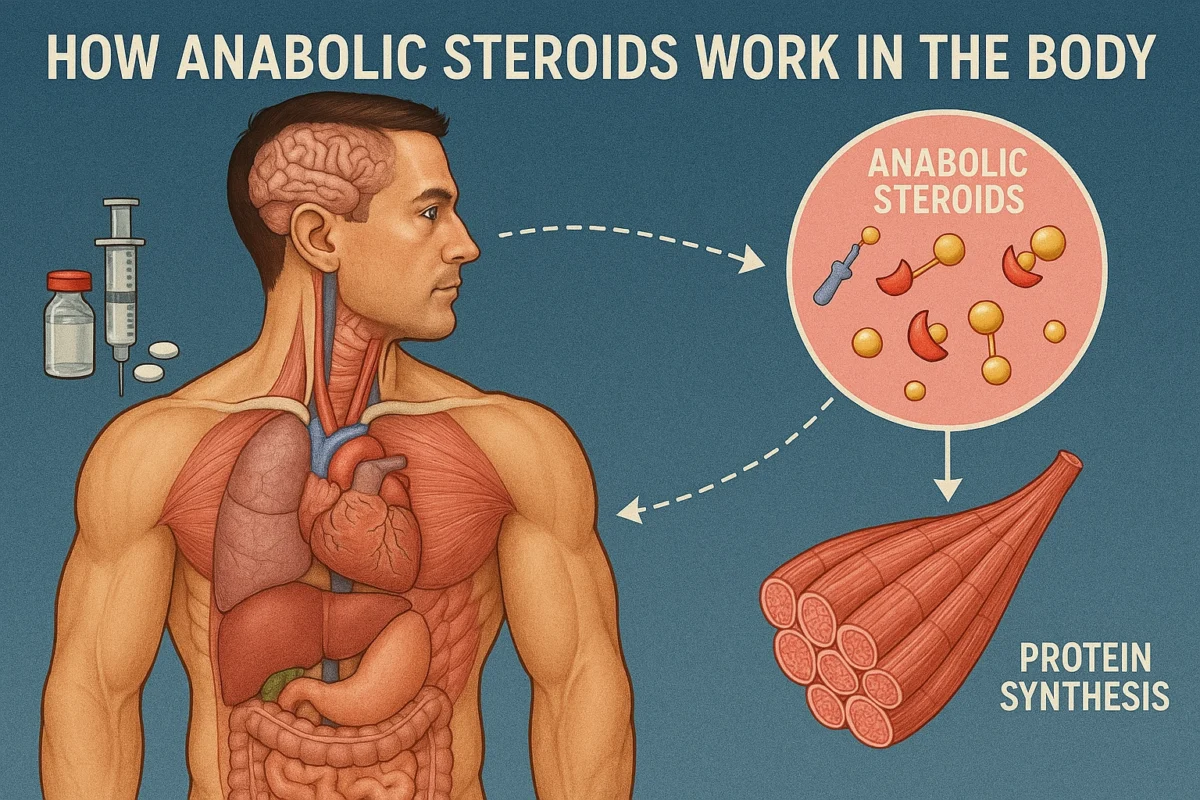
They boost protein synthesis, improve recovery time, and increase red blood cell production. However, this powerful intervention in your body’s chemistry can lead to hormone problems if not carefully managed.
Your genetic makeup, training intensity, and diet all influence how effectively steroids work in your system.
The results vary considerably from person to person, making individual responses unpredictable.
Benefits of Anabolic Steroids
While anabolic steroids are primarily known for dramatically increasing muscle mass and strength gains in bodybuilders like Arnold Schwarzenegger during his Mr. Olympia years, you’ll find they offer additional benefits, including faster recovery times and enhanced athletic endurance.
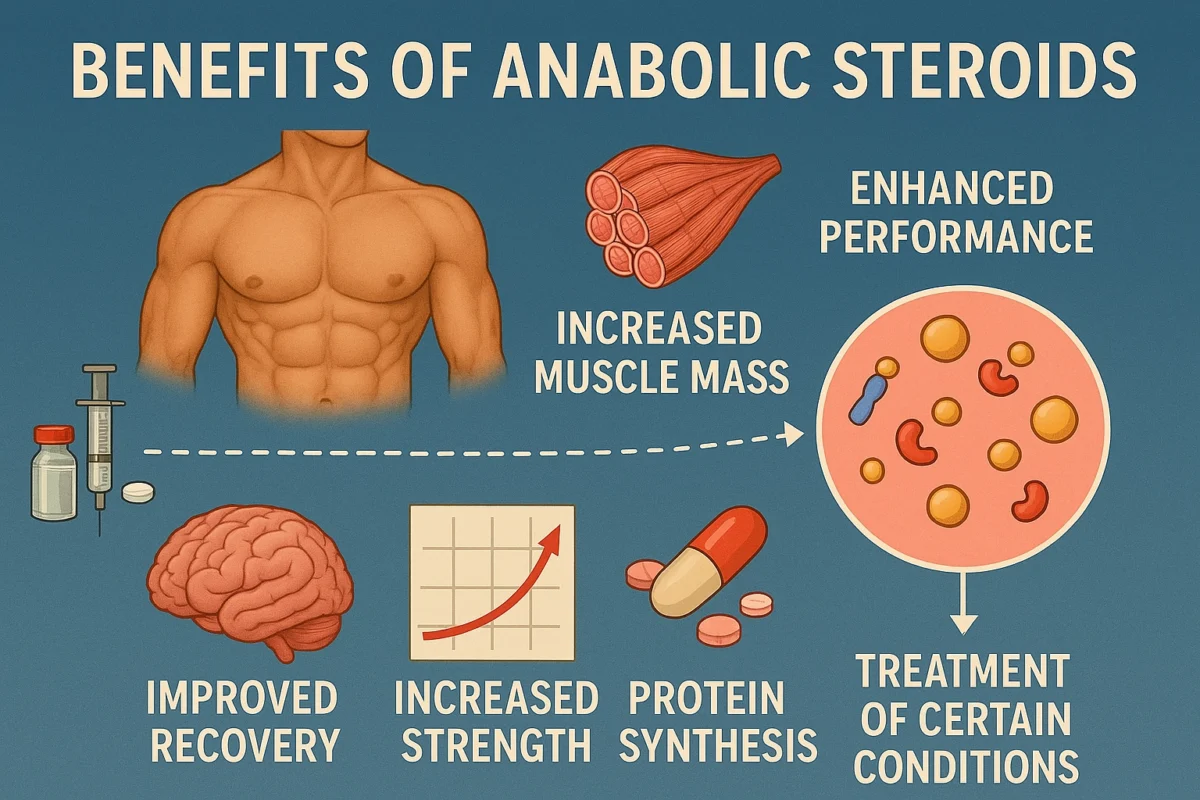
Your body’s protein synthesis accelerates considerably with steroid use, allowing you to train harder and recover more quickly between intense workout sessions.
Beyond athletics, it is essential to understand that steroids serve important medical purposes, helping patients with muscle-wasting conditions and supporting post-surgery recovery when prescribed by healthcare professionals.
1. Muscle Growth and Strength Enhancement
Powerfully accelerating muscle development and strength gains, anabolic steroids have become renowned for their ability to transform physiques in record time.
When you’re looking to understand how anabolic steroid use impacts the body, you’ll find that these compounds greatly enhance your muscle’s protein synthesis capabilities.
You’ll notice considerably faster muscle mass development compared to natural training, with results often visible within weeks rather than months.
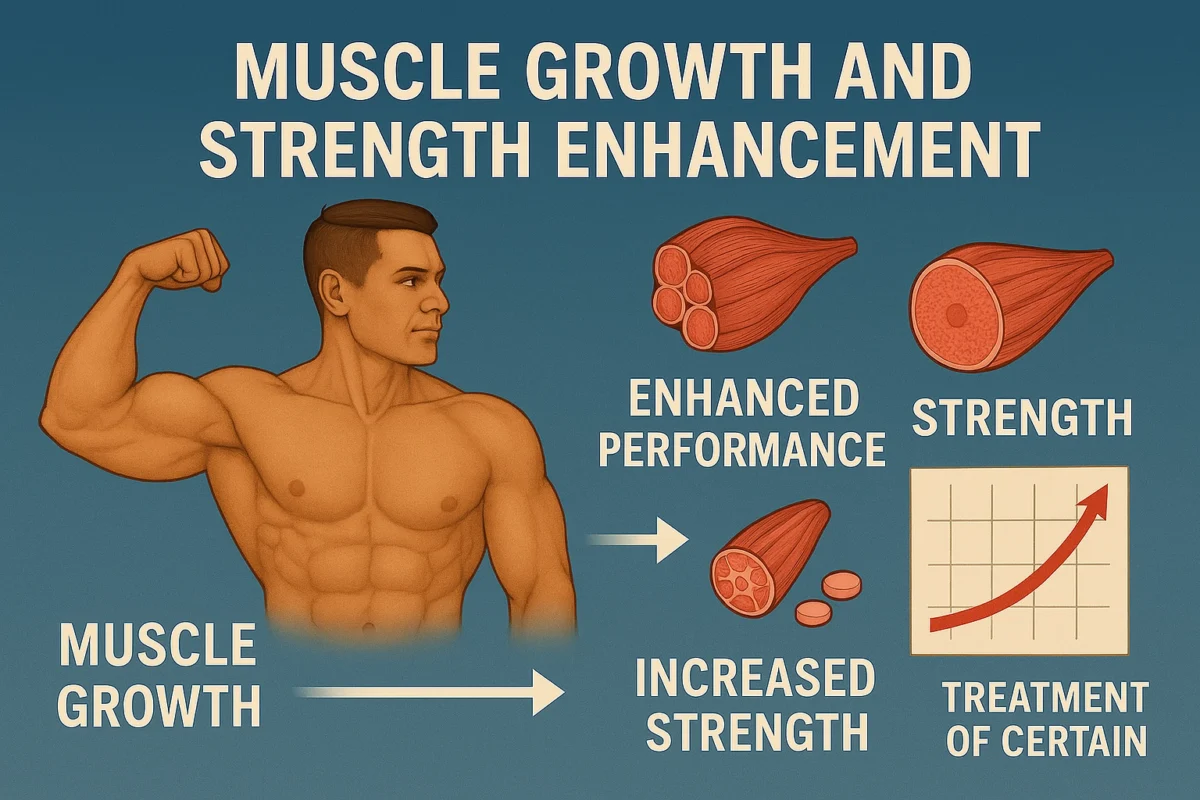
This accelerated growth happens because steroids improve your body’s ability to repair and build new muscle tissue after intense workouts.
They’re particularly effective at preventing muscle atrophy while allowing you to train harder and recover faster, which explains why they’ve become so prevalent in competitive bodybuilding and strength sports.
The enhanced protein synthesis creates an ideal environment for rapid muscular development and power gains.
2. Improved Endurance and Recovery
Athletes’ endurance and recovery capabilities see dramatic improvements when anabolic steroids enter the picture.
You’ll notice significant changes in your aerobic capacity as anabolic-androgenic steroids boost red blood cell production, delivering more oxygen to your muscles during intense training sessions.
This enhanced oxygen transport system isn’t just about improved endurance – it’s a breakthrough for your recovery between workouts.
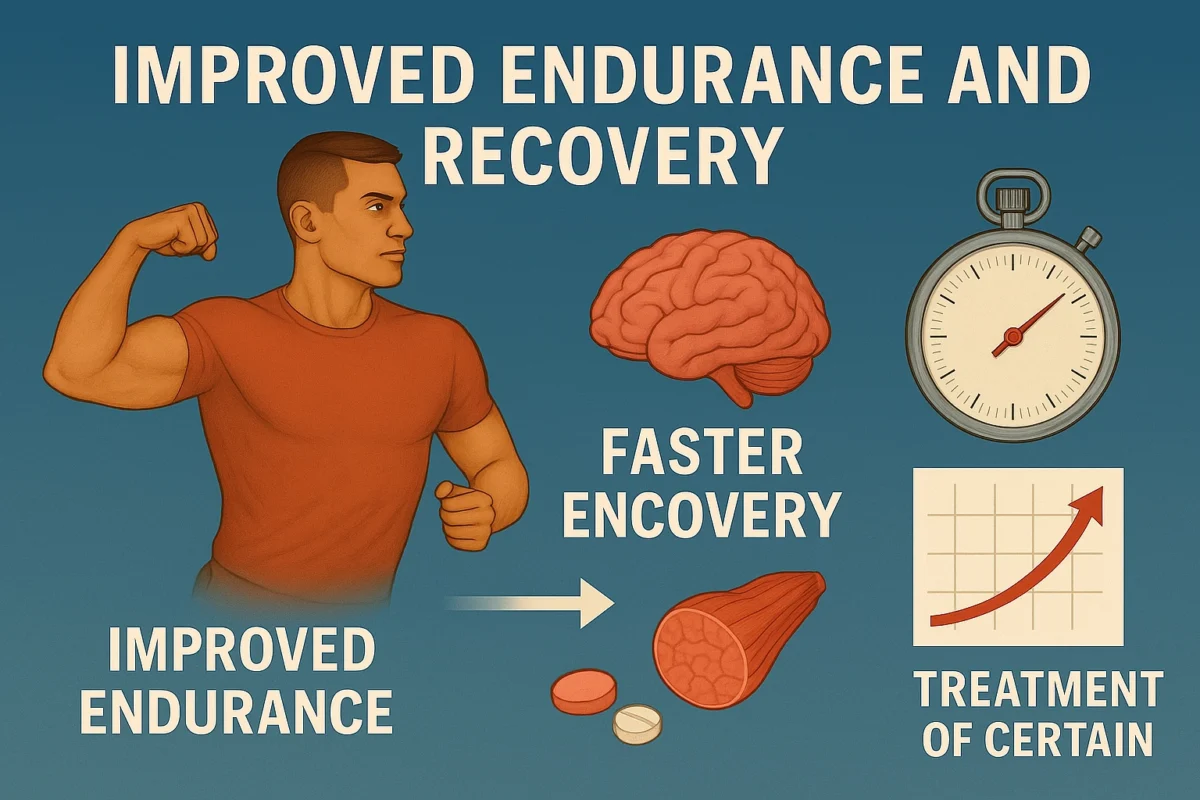
You’ll find yourself bouncing back faster from intense training sessions, allowing you to hit the gym more frequently and with greater intensity.
Whether you’re cycling, swimming, or running long distances, this accelerated recovery allows you to push harder and longer in each session.
The result? You’ll make faster progress and achieve performance gains that would typically take much longer to reach naturally.
3. Therapeutic and Medical Applications
Beyond athletic performance enhancement, anabolic steroids serve essential therapeutic purposes in modern medicine.
These hormone products play a vital role in treating patients with delayed puberty, helping restore standard developmental patterns when prescribed by healthcare professionals.
You’ll find that doctors prescribe steroids for specific medical conditions, particularly muscle-wasting diseases like HIV/AIDS and cancer cachexia.
In these therapeutic and medical applications, steroids help stimulate appetite and prevent muscle deterioration, giving patients a better chance of overcoming severe health challenges.
Under proper medical supervision, anabolic steroids can improve the quality of life for those suffering from certain types of anemia.
They’re carefully monitored to maintain hormonal balance while minimizing potential side effects – proving that these compounds, when used appropriately, can be valuable medical tools.
Common Misconceptions About Anabolic Steroids
You’ll often hear misleading claims about steroids, including the common belief that they’re a magical shortcut requiring no effort in the gym.
Another widespread myth suggests all steroid use inevitably leads to severe health problems, though the reality involves more nuanced factors like dosage, duration, and medical supervision.
While many associate steroid use exclusively with elite athletes and competitive bodybuilders like Arnold Schwarzenegger in his prime, studies show that everyday gym-goers and recreational athletes also experiment with these substances.
1. “Steroids Are a Shortcut to Muscle Without Hard Work”
While many envision anabolic steroids as a magic shortcut to building muscle, the reality requires far more dedication than simply injecting compounds and watching gains appear.
Even performance and image-enhancing drug users must maintain intense training regimens and strict nutrition protocols to see results. You can’t escape the fundamental requirements of progressive overload and proper recovery when building muscle.
Without consistent training, you’ll face muscle loss regardless of steroid use. The same discipline that keeps natural athletes progressing applies equally to those using anabolic compounds. Just as Arnold Schwarzenegger famously trained for five hours daily during his prime, doping in sports doesn’t eliminate the need for hard work.
Steroids may enhance your body’s response to training, but they won’t build an impressive physique without dedication in the gym and kitchen.
2. “All Steroid Use Leads to Dangerous Health Outcomes”
Despite sensationalized media coverage of extreme cases, the relationship between anabolic steroids and health outcomes isn’t as black-and-white as commonly portrayed.
While concerns about liver injury and hepatitis B transmission through shared needles are valid, research shows that supervised steroid use with proper protocols can greatly minimize health risks.
You’ll find that responsible use under medical guidance, including:
- Regular blood work monitoring
- Proper cycling and dosing
- Post-cycle therapy (PCT)
- Clean injection practices
- Liver function testing
These safety measures can help prevent many of the adverse effects associated with steroid use.
Even Arnold Schwarzenegger has spoken about how controlled steroid use during his competitive years, combined with proper doping prevention education, allowed him to maintain his health while achieving his bodybuilding goals.
3. “Only Pro Athletes and Bodybuilders Use Steroids”
The common stereotype that professional athletes and competitive bodybuilders exclusively use anabolic steroids doesn’t reflect today’s reality.
Research shows that steroid use spans across various demographics, including recreational gym-goers, fitness enthusiasts, and individuals struggling with muscle dysmorphia.
You’ll find that many users turn to designer steroids and performance enhancers to achieve specific aesthetic goals or overcome training plateaus.
While some develop steroid cravings through prolonged use, others view these substances as tools for self-improvement rather than a competitive advantage.
This broader pattern of use highlights why education and harm reduction strategies shouldn’t solely target elite athletes.
Understanding this diversity helps combat stigma and enables more effective support for all users, whether they’re competing on stage or simply working towards personal fitness goals.
Risks, Legal Status, and Athletic Use of Anabolic Steroids
Since athletes began using anabolic steroids in the 1950s, these synthetic substances have sparked intense debate around their risks and regulation in sports.
You’ll find they’re classified as class c drugs in many countries, making their possession and distribution illegal without a prescription. The health risks are serious – from heart attack to liver disease and psychological dependence.
While some bodybuilders argue for their performance-enhancing benefits, major sports organizations strictly prohibit steroid use. The International Olympic Committee began testing for these substances in 1976, and most professional leagues now have extensive screening programs.
You’re looking at potential career-ending consequences if caught using steroids in competitive sports, not to mention the lasting damage to your body’s natural hormone production and crucial organs.
Risks and Side Effects of Anabolic Steroid Use
If you’re considering anabolic steroids, you’ll need to understand their serious cardiovascular risks, including increased blood pressure, enlarged heart muscle, and potential for life-threatening complications.
Your body’s natural hormone production can become severely disrupted, leading to fertility issues, testicular shrinkage in men, and irreversible changes in women.
The psychological effects you might experience range from aggressive behavior (“roid rage”) to severe depression and anxiety, particularly when cycling off the substances.
#Cardiovascular Effects
Cardiovascular risks of anabolic steroid use represent some of the most serious health concerns for bodybuilders who choose to take performance-enhancing drugs.
While steroids may enhance muscle tissue growth and activate testosterone receptors similar to natural growth hormone, they can severely impact your heart health.
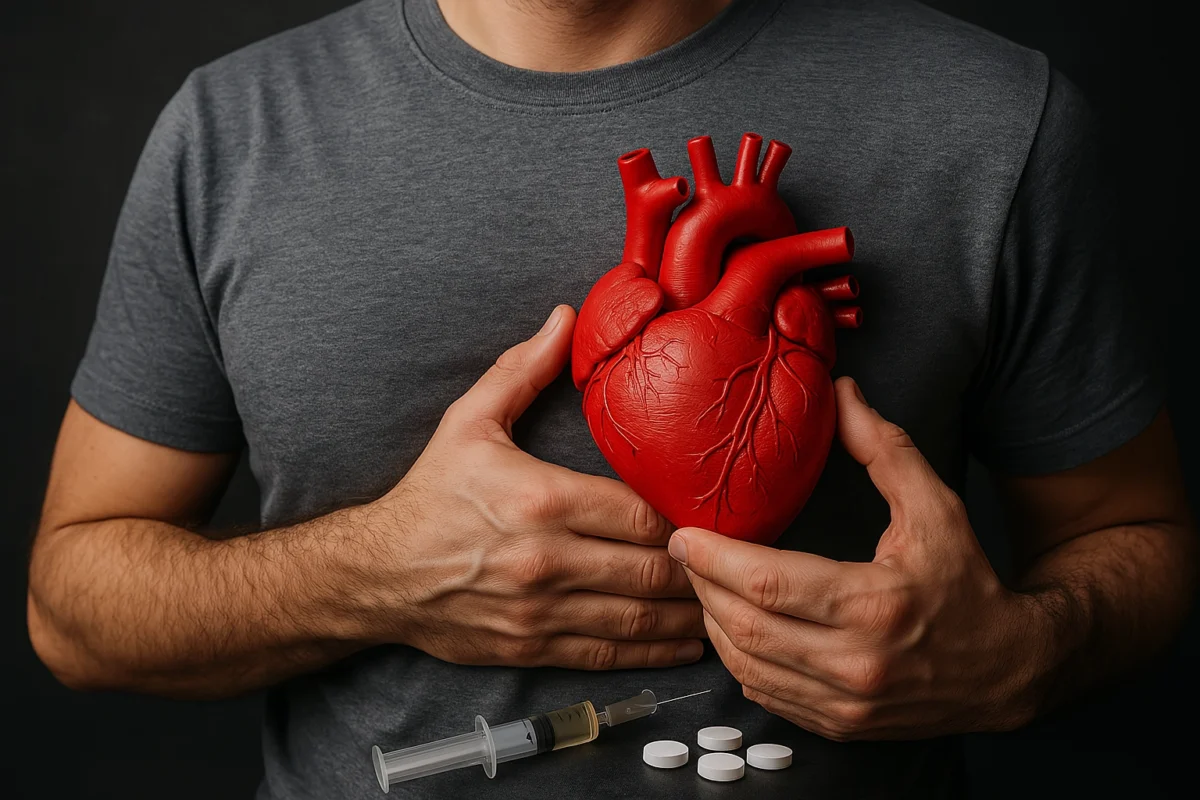
You’ll face multiple cardiovascular dangers when using steroids:
- Your blood pressure may rise to dangerous levels
- Your LDL (bad) cholesterol increases while HDL (good) cholesterol decreases
- Your risk of heart attack and stroke greatly increases
- Your heart’s structure can change, particularly the left ventricle
These structural changes can weaken your heart’s function over time and may lead to sudden cardiac death.
Even Arnold Schwarzenegger, who admitted to steroid use in his competitive days, has undergone multiple heart surgeries – a sobering reminder of these risks.
#Hormonal and Reproductive Disruption
Although bodybuilders may seek enhanced performance through anabolic steroids, these substances can severely disrupt your body’s natural hormone production and reproductive functions. When you introduce synthetic gonadal steroids, your body reduces its production of essential hormones, including gonadotropin, luteinizing hormone, and human growth hormone.
For men, this disruption can lead to serious consequences:
- Your testicles may shrink notably
- Your sperm count drops, potentially causing infertility
- You might develop breast tissue (gynecomastia)
Women face equally concerning changes:
- Your voice may deepen permanently
- Facial and body hair will increase
- Your menstrual cycle becomes irregular or stops
These changes can persist long after you stop using steroids, and some effects may be irreversible, impacting your long-term reproductive health and hormone balance.
#Psychological and Behavioral Effects
Beyond the physical changes steroids cause in your body, these substances can dramatically alter your mental state and behavior patterns.
You’ll likely experience intense mood swings, shifting from feeling on top of the world to struggling with anxiety and depression.
“Roid rage” isn’t just a myth – it’s a real phenomenon that can make you unusually aggressive and irritable.
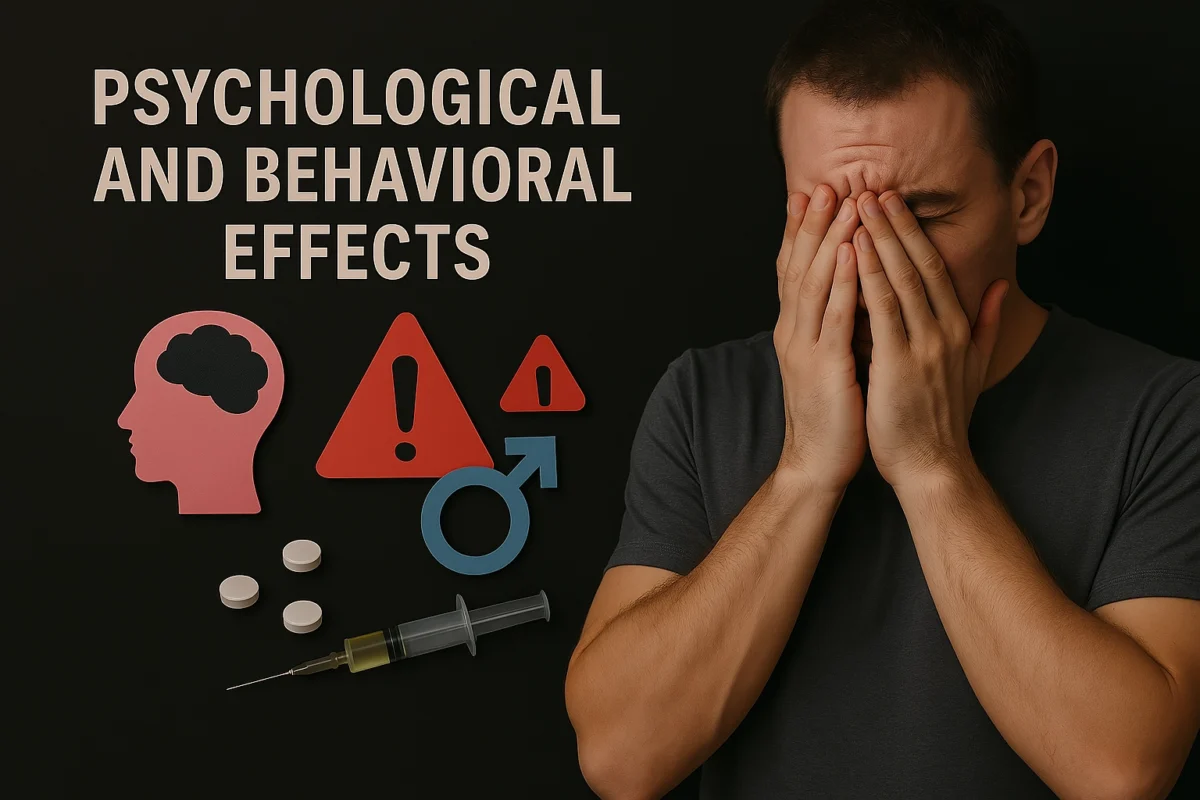
Even Arnold Schwarzenegger has openly discussed the psychological challenges he faced during his competitive years.
Long-term steroid use may lead to:
- Severe paranoid thoughts
- Episodes of psychosis
- Dependency issues
- Withdrawal symptoms
When you stop using steroids, you might face additional mental health challenges, including persistent fatigue and depression.
These psychological effects can impact both your training performance and personal relationships, making it essential to understand these risks before considering steroid use.
Legal Status of Anabolic Steroids Worldwide
Across the globe, you’ll find that anabolic steroids face varying levels of regulation, from strict prohibition to controlled medical use under prescription.
In the United States, they’re classified as Schedule III controlled substances, while many European countries maintain similar but distinct regulatory frameworks for both possession and distribution.
The legal landscape becomes even more complex when you factor in international sports organizations’ anti-doping policies, which universally ban steroid use in competitive athletics.
1. United States
The United States maintains some of the strictest regulations on anabolic steroids in the world, classifying them as Schedule III controlled substances. If you’re caught possessing, distributing, or using steroids without a valid prescription, you’ll face serious legal consequences.
You’re looking at potential felony charges, hefty fines, and even prison time.
Even Arnold Schwarzenegger, who openly discussed using steroids during his competitive years when they were legal, has since advocated for natural bodybuilding.
Today’s reality is apparent: unless you’ve got a legitimate medical prescription, using anabolic steroids in the U.S. isn’t just risky for your health – it’s a criminal offense.
The DEA enforces these laws rigorously, putting steroid possession in the same category as ketamine and certain opioids.
2. United Kingdom and Europe
While American laws take a hard stance against steroids, you’ll find a distinctly different approach in the United Kingdom and much of Europe.
In the UK, you’re legally allowed to possess and use anabolic steroids for personal consumption, though supplying or manufacturing them without proper prescription remains prohibited.
This balanced regulatory framework extends to several European nations, where personal use isn’t criminalized to the same degree as in the US.
However, you should be aware that, despite these more lenient policies, many athletes still turn to black market sources. This creates risks not only for competitive bodybuilders but also for recreational gym-goers who might obtain contaminated or mislabeled products.
If you’re competing in UK or European bodybuilding competitions, you’ll still face strict testing protocols regardless of local laws.
3. Other Global Regions
Beyond European and American borders, steroid regulations vary dramatically across different global regions, creating a complex landscape for bodybuilders and athletes.
You’ll find significant regulatory gaps in countries like Mexico and parts of Eastern Europe, where steroids are often available over the counter without prescriptions.
While this accessibility might seem convenient, it comes with serious risks you shouldn’t ignore. The lack of strict enforcement in these regions has led to:
- Uncontrolled manufacturing conditions
- Counterfeit products flooding the market
- Limited quality control measures
- Increased health risks for users
If you’re competing internationally, you need to understand that these regional differences don’t exempt you from drug testing in sanctioned competitions.
Remember that easier access doesn’t mean safer use – Arnold himself has always emphasized the importance of natural training and proper medical supervision.
4. Sports and Anti-Doping Policies
Since competitive sports depend on fairness and integrity, strict anti-doping policies have become the cornerstone of modern athletics worldwide. Organizations like WADA actively enforce thorough bans on anabolic steroids through rigorous testing protocols and severe consequences for violations.
If you’re caught using banned substances, you’ll face serious repercussions:
- Competition suspensions or lifetime bans
- Removal of titles and athletic records
- Termination of lucrative endorsement deals
- Permanent damage to your professional reputation
Even Arnold Schwarzenegger, who openly discussed steroid use during his competitive years in the 1970s, has acknowledged how the landscape has changed.
Today’s athletes must navigate a zero-tolerance environment where WADA’s Prohibited List encompasses all forms of AAS, ensuring fair competition through frequent and sophisticated testing procedures.
Anabolic Steroids in Sports and Athletics
You’ll find that anabolic steroids have transformed competitive sports, creating a constant tension between athletes seeking performance advantages and governing bodies endeavoring to maintain fair play.
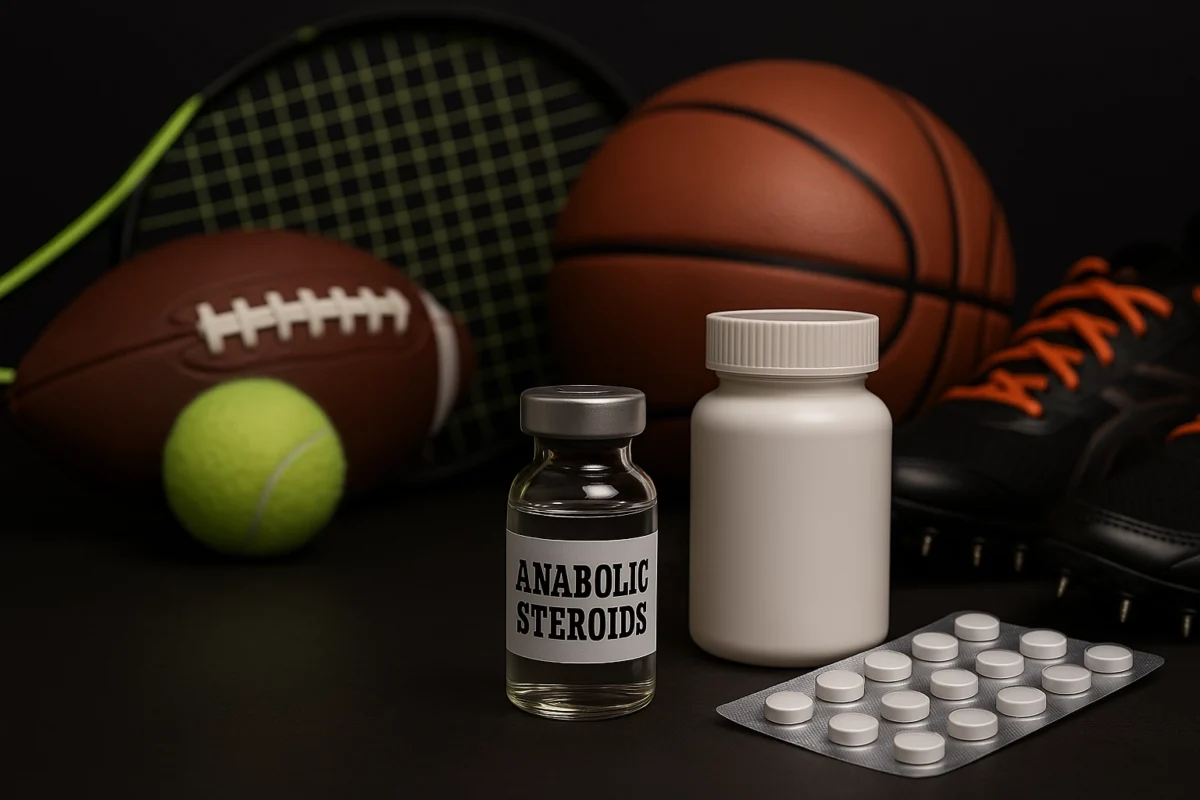
The challenge becomes clear when you look at high-profile cases like Ben Johnson’s 1988 Olympic scandal, which exposed how deeply performance-enhancing substances had penetrated elite athletics.
While testing methods continue to improve, an ongoing cat-and-mouse game between sophisticated doping techniques and detection technologies is being played out in modern sports.
#Performance Enhancement vs. Fair Play
While anabolic steroids can dramatically enhance athletic performance, their use creates an uneven playing field that undermines the core values of fair competition.
You’ll find that steroid users gain significant advantages in muscle growth, recovery time, and overall strength that natural athletes simply can’t match.
Consider how steroids affect competitive integrity: When some athletes use these substances while others compete clean, it’s impossible to determine true athletic merit.
Even Arnold Schwarzenegger, who admitted to using steroids during his early bodybuilding career, later advocated for natural training after recognizing the ethical implications.
Today’s sporting world faces a critical challenge – balancing the undeniable effectiveness of performance enhancement against the fundamental principle of fair play that’s essential to athletic competition.
The choice between enhanced performance and competitive integrity remains a defining issue in modern sports.
#High-Profile Doping Cases
The dark side of performance enhancement has played out dramatically through several high-profile doping scandals that shook the sports world.
You’ve likely heard about major cases across different sports that changed how we view athletic achievement:
- Baseball’s steroid era exposed widespread PED use, leading to congressional hearings and tainted records
- Olympic athletes stripped of medals after failed drug tests
- Tour de France cyclists, including former champions, caught using performance enhancers
These cases haven’t just ended careers – they’ve transformed how sports organizations approach testing and enforcement.
The scrutiny has intensified, with governing bodies implementing stricter protocols and harsher penalties. While some athletes have tried to challenge positive test results, the evidence often proves overwhelming, leading to suspensions, fines, and permanent damage to their legacies.
#Ongoing Challenges
Despite rigorous testing protocols and harsh penalties, the cat-and-mouse game between athletes using performance-enhancing drugs and anti-doping agencies continues to evolve.
You’ll find that modern designer steroids and micro-dosing techniques make detection increasingly challenging, even as testing methods improve.
The battle for clean sports requires a multi-faceted approach that you should understand:
- Enhanced education programs to help athletes understand the risks and consequences
- Development of more sophisticated testing technologies
- Greater support systems for athletes who compete naturally
- Improved awareness of legal and ethical implications
As Arnold often emphasized during his later advocacy work, true strength comes from dedication, not shortcuts.
The future of sports integrity depends on both technological advancement and a cultural shift toward celebrating natural achievement.
Safer Alternatives to Anabolic Steroids and Guidelines for Responsible Use
Natural bodybuilding alternatives offer safer paths to achieving impressive physique goals without risking the dangerous side effects of anabolic steroids.
Here’s what you can focus on instead:
- Optimize your nutrition with proper protein intake (1.6-2.2g per kg of body weight)
- Follow progressive overload training principles
- Get 7-9 hours of quality sleep nightly
- Use legal supplements like creatine monohydrate and whey protein
As Arnold once said, “The mind is the limit. When you’re rested and have faith in yourself, all things are possible.”
You’ll want to:
- Track your macronutrients
- Maintain consistent training logs
- Practice proper form
- Stay hydrated (1 gallon daily)
- Consider natural testosterone boosters like vitamin D and zinc
Natural Alternatives to Anabolic Steroids
Safe and effective alternatives to anabolic steroids have gained widespread popularity among serious athletes looking to build muscle naturally.
You’ll find science-backed supplements that can support your fitness goals without compromising your health.
Your best options include:
- Whey and casein protein powders to fuel muscle growth and recovery
- Creatine monohydrate to boost strength and power output
- BCAAs reduce muscle soreness and support protein synthesis
Even Arnold Schwarzenegger has advocated for natural supplementation in recent years, emphasizing that you don’t need dangerous substances to build an impressive physique.
These supplements work together to enhance your body’s natural muscle-building processes when used in conjunction with proper training and nutrition.
Training and Nutrition Optimization
While supplements can support your fitness journey, the real foundation of muscle growth comes from optimizing your training and nutrition protocols. You’ll need to focus on these key elements:
- Progressive overload: Gradually increase your weights and training volume to challenge your muscles continually.
- HIIT workouts: Incorporate high-intensity intervals to boost your metabolism and improve endurance.
- Strategic nutrition: Balance your macronutrients with:
- Lean protein for muscle repair
- Healthy fats for hormone production
- Complex carbs for sustained energy
Don’t forget what Arnold always emphasized – success requires a holistic approach.
You’ll need to prioritize quality sleep, manage stress levels, and stay properly hydrated.
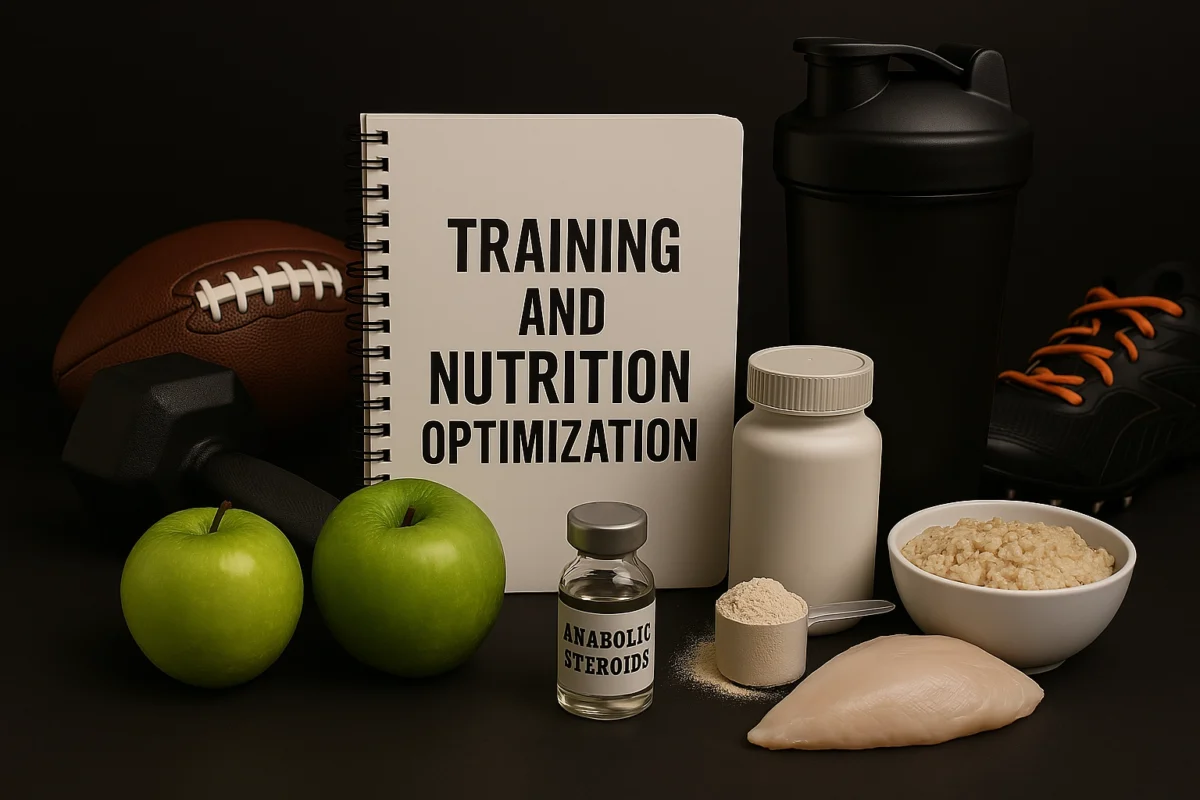
Research-Backed Emerging Alternatives
Recent scientific advances have opened up new possibilities for performance enhancement beyond traditional supplements and steroids. Research has revealed promising compounds like SARMs and peptide hormones that may offer muscle-building benefits with potentially fewer side effects than anabolic steroids.
While these emerging alternatives show promise in early studies, it is advisable to approach them with caution. SARMs work by targeting specific androgen receptors, whereas peptide hormones, such as growth hormone secretagogues, aim to boost the body’s natural hormone production.
Even Arnold, known for his experimental approach to training, would likely emphasize the importance of waiting for more safety data.
Keep in mind that many of these compounds have not yet been approved for human use. Until more clinical research is completed, focus on optimizing your training and nutrition fundamentals while staying informed about the latest scientific developments.
How to Use Anabolic Steroids Safely (If You Choose To)
If you’ve decided to use anabolic steroids, having proper medical supervision and understanding correct dosing protocols is essential for harm reduction.
You’ll need to commit to regular blood work monitoring and educate yourself thoroughly on the compounds you’re considering, including potential side effects and interactions.
Implementing a well-planned Post-Cycle Therapy (PCT) will help your body restore natural hormone production and maintain your gains after completing a cycle.
1. Medical Supervision and Dosing
Although anabolic steroids remain controversial in bodybuilding, those who choose to use them must prioritize medical supervision for safety.
Before starting any cycle, consult with a qualified healthcare provider who can properly evaluate your unique situation.
Your doctor should:
- Assess your medical history and current health status
- Determine appropriate compounds and dosages for your goals
- Order through bloodwork before, during, and after cycles
- Monitor essential health markers throughout your protocol
- Help structure safe cycle lengths and recovery periods
2. Education and Monitoring
Understanding anabolic steroids requires more than just knowing which compounds to take – you’ll need thorough education about their mechanisms, effects, and warning signs.
If you’re using steroids, you must monitor key health indicators and stay alert for potential complications.
Watch for these critical signs:
- Hormonal changes: Notice any unusual fatigue, decreased sex drive, or breast tissue development
- Mental health shifts: Track your mood swings, anxiety levels, or depression symptoms
- Physical indicators: Document acne outbreaks, hair loss patterns, or blood pressure fluctuations
Remember what Arnold always emphasized – knowledge is power in bodybuilding.
Regular check-ups with healthcare providers who know about your steroid use are essential. Track your symptoms in a detailed log and maintain open communication with medical professionals about any concerning changes you experience.
3. Post-Cycle Therapy (PCT)
When your steroid cycle ends, proper Post-Cycle Therapy becomes vital for maintaining your hard-earned gains and protecting your body’s natural hormone production.
PCT helps restart your body’s testosterone production and prevents unwanted side effects.
Your PCT protocol should include the following:
- SERMs like Clomid or Nolvadex stimulate natural testosterone
- Aromatase inhibitors to manage estrogen levels
- Supporting supplements for liver function
Even Arnold, who’s been open about steroid use in his era, emphasizes the importance of post-cycle care.
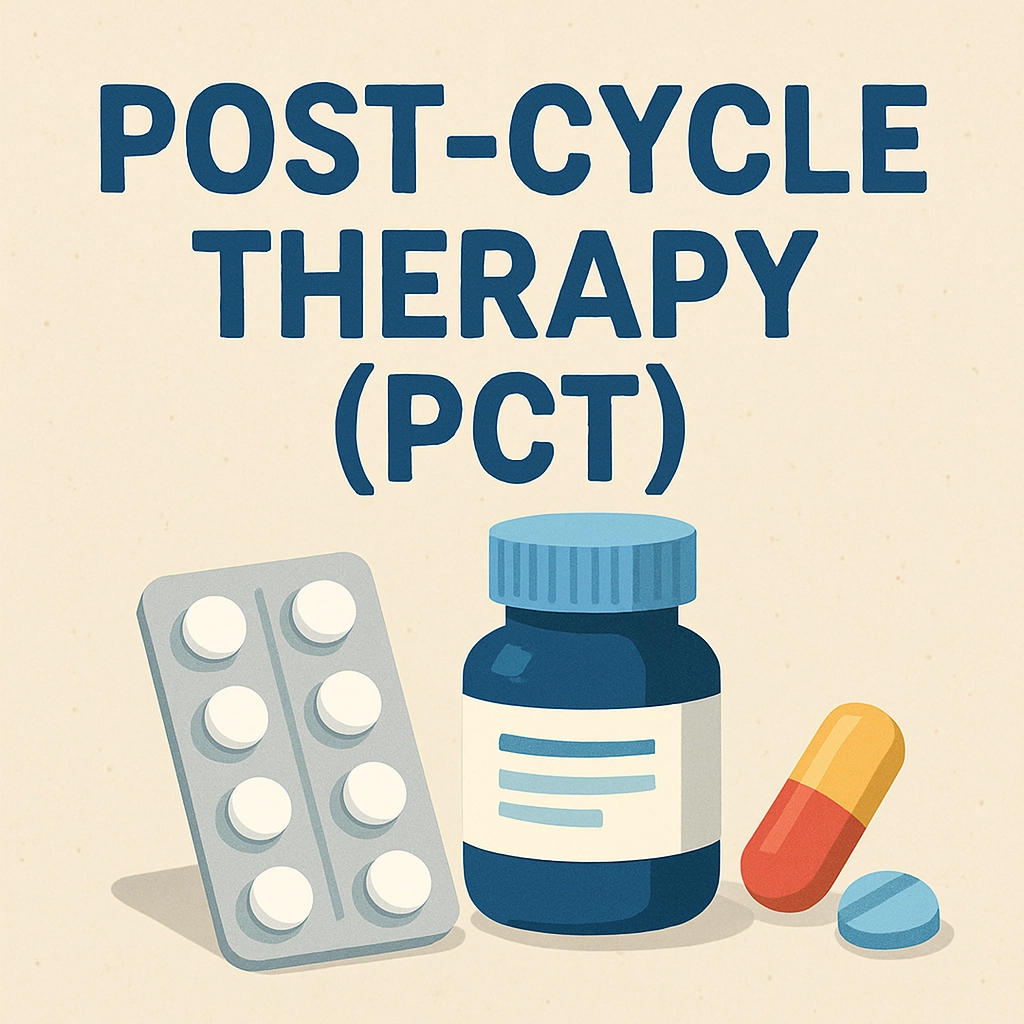
Without proper PCT, you’re risking serious issues like infertility, depression, and long-term hormonal imbalances.
Think of PCT as your body’s reset button – it’s not optional but rather an essential step in maintaining your gains while protecting your endocrine system’s future function.
To Wrap It All Up
While anabolic steroids can enhance muscle growth and performance, they’re not a magic shortcut to your fitness goals. You’ll still need dedication, proper nutrition, and intense training to see results.
Whether you choose the natural path or medically supervised steroid use, understanding the science, risks, and alternatives helps you make informed decisions. Remember Arnold’s wisdom: success in bodybuilding comes from knowledge, discipline, and unwavering commitment—not just what’s in your medicine cabinet.
FAQs
What Are Bodybuilding Steroids?
Bodybuilding steroids are synthetic substances that mimic testosterone to promote muscle growth and strength. These anabolic steroids increase protein synthesis within cells, enhancing muscle recovery and development. Common examples include testosterone enanthate, dianabol, and trenbolone, used to accelerate bulking cycles.
Are Steroids Safe for Bodybuilding?
Steroids are not safe for bodybuilding due to serious health risks, including liver damage, heart disease, hormonal imbalance, and psychological effects such as aggression or depression. While they promote rapid muscle growth, their long-term side effects often outweigh short-term benefits.
How Do Steroids Work for Muscle Growth?
Steroids work for muscle growth by increasing protein synthesis and nitrogen retention in muscle cells. This leads to faster muscle repair, greater strength gains, and enhanced workout performance. Steroids also reduce recovery time, allowing bodybuilders to train more frequently and intensively.
What Are the Side Effects of Steroids in Bodybuilding?
The side effects of steroids in bodybuilding include liver damage, high blood pressure, heart disease, acne, hair loss, hormonal imbalances, infertility, and mood disorders such as aggression or depression. Long-term use increases the risk of organ failure and serious health complications.
Is It Legal to Use Steroids for Bodybuilding?
Using steroids for bodybuilding without a prescription is illegal in many countries, including the United States, where anabolic steroids are classified as controlled substances. Legal use requires a prescription for medical conditions. Unauthorized possession, distribution, or use can lead to fines and imprisonment.
Natural Alternatives to Steroids for Bodybuilding
Natural alternatives to steroids for bodybuilding include creatine, protein supplements, branched-chain amino acids (BCAAs), beta-alanine, and natural testosterone boosters like ashwagandha or fenugreek. These supplements support muscle growth, strength, and recovery without the legal risks and side effects of anabolic steroids.
Can You Build Muscle Without Steroids?
You can build muscle without steroids by following structured resistance training, consuming adequate protein and calories, and prioritizing recovery and sleep. Natural muscle growth may be slower than with steroids, but it avoids health risks while promoting sustainable strength and fitness gains.





